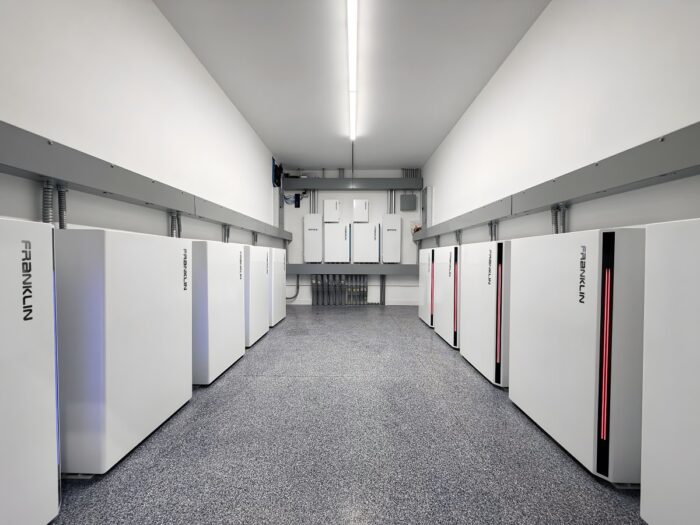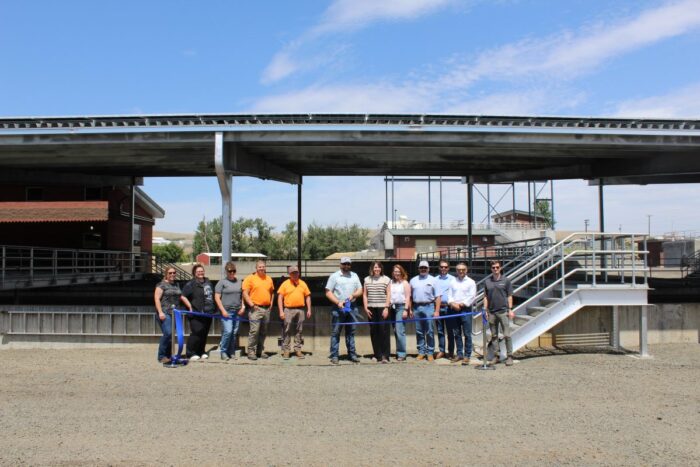Vote: Project of the Year 2025 | Microgrid

Here are the Microgrid nominees for the 2025 Solar Builder Project of the Year awards.
The form is at the bottom of the page. You are allowed to vote once per day from now until Friday, Oct. 10 at midnight (ET). (FYI: Our voting widget will let you vote more than once a day, but we filter these out in the back-end. Sorry, ballot stuffers.) Winners will be announced and prominently featured in the Q4 issue of Solar Builder magazine and online in December.

Thanks to CPS America for sponsoring the 2025 Microgrid Project of the Year.
Be sure to vote in every category!
Camp Elena Ecofriendly Camp
Texas | 72 kW PV + 153.6 kWh BESS
Solar Power Integrator engineered and built two independent hybrid microgrids for Camp Elena, in Terlingua, Texas, near Big Bend National Park. Each system pairs a 36.08 kW solar array with 153 kWh of battery energy storage and a 15 kW Generac generator, delivering 24/7 power for an off-grid hospitality site. The technical merits of the project include the architecture, which prioritizes solar + storage for daily operations, with the generator reserved for prolonged overcast periods, exceptional peaks. Batteries provide overnight autonomy and stabilize voltage/frequency under fast-changing loads; control logic implements solar-first dispatch, peak-shaving, and automatic generator start based on state-of-charge and load thresholds. Each microgrid is metered and networked for remote monitoring.
The site’s remoteness required careful logistics: consolidated deliveries, contingency spares, and equipment staged to minimize backhauls. Rocky terrain dictated engineered foundations — rock drilling/anchors where bedrock was shallow and trench routes selected to protect cabling while maintaining code-required burial depth. Thermal extremes and wind exposure informed racking selection, conductor sizing, ventilation clearances, and lightning/grounding design. Wildlife and guest-safety considerations shaped equipment enclosures. Because guest demand was tied to an eco-tent concept still evolving, the loads are treated as a distribution with seasonal and occupancy variability rather than fixed points.
Developer/EPC/Installer: Solar Power Integrator | Modules: Jinko | Inverters: Sol-Ark | Storage: Homegrid with Power Cube | Mounting/Racking: Ironridge
Marshall Commercial Property
Marshall, Michigan | 57.2 kWdc PV + 150 kWh storage

This project addresses the challenge of powering a headquarters and a warehouse entirely off-grid. With a 400 A service and two facilities to supply, the site demanded an energy system that offers exceptional storage capacity, intelligent load control, and seamless integration with third-party solar technologies. The deployed system consists of two FranklinWH aGates — one aGate distributes power to the warehouse with 4 15-kWh batteries, while the other aGate feeds the main office with 6 15-kWh batteries. The 150 kWh of total capacity offers energy freedom and peace of mind, especially during Michigan’s cold winters when solar production can be intermittent. To match the substantial storage capacity with solar generation, the site uses mixed PV systems with 52 Enphase IQ8+ microinverters on one side and 13 Hoymiles quad microinverters on the other. Acting as the interface between the solar arrays and the FranklinWH System, the aPbox accommodated large PV inputs, with the ability to integrate solar arrays located far away from the main control units. The integration with two SPAN smart panels enables dynamic load management, allowing the operator to power the entire property or prioritize critical circuits and shed non-essential loads as necessary. The result is a commercial-scale property that operates completely off-grid while meeting advanced energy needs.
Developer/EPC/Installer: Mid-America Solar | Modules: JA Solar | Inverters: Enphase and Hoymiles | Storage: Sinclair Designs and Engineering Skyrack 2.0 | Mounting/Racking: FranklinWH | Controller: FranklinWH aGate
Orcas Center Microgrid
Eastsound, Washington | 100 kW PV + 1,376 kWh BESS
Located in Eastsound on Orcas Island, Washington, the Orcas Center serves as a critical community hub, providing essential cultural and community services. Recognizing the growing need for resilient, renewable energy solutions, Cascadia Renewables initiated a comprehensive solar plus storage microgrid project, performing initial feasibility studies, securing critical grant funding, and subsequently managing the project implementation. Cascadia Renewables served as the project originator and technical lead.
This microgrid integrates onsite solar PV, battery energy storage, and a diesel generator. An SEL grid isolation relay triggers a motorized breaker to island and reconnect the microgrid to the local grid. The generator provides supplemental power to backup loads and to charge the battery when at a low state of charge, while solar and grid power is unavailable. The team performed detailed hand calculations and developed synthetic load analyses to determine critical loads, system demands, and initial sizing for the battery energy storage system (BESS) and PV arrays.
Cascadia Renewables identified the need for an optimized, resilient system to sustain critical functions through extended grid outages, ultimately defining system requirements around peak demand and resiliency scenarios. Mayfield Renewables delivered full permit and construction sets for this new PV + BESS system that integrated with a 150 kW generator, and supported relay coordination to isolate the microgrid and charge the BESS with the generator when at a low state of charge. Hurdles included the facility’s main breaker that required downsizing to enable a load-side connection, and the project had to adhere to strict equipment placement requirements per local and national fire codes.
Developer: Cascadia Renewables | EPC/Installer: Sulis Energy and Mills Electric | Modules: Heliene | Inverters: SolarEdge | Storage: ELM MG2 and Hithium Cells | Mounting/Racking: IronRidge | Controller: ELM Fieldsight
Pendleton Clean Energy Resilience Project
Pendleton, Oregon | 240 kW PV + 1,376 kWh BESS

Pendleton, Oregon’s Wastewater Treatment and Resource Recovery Facility (WWTRRF) has become one of the most ambitious examples of municipal sustainability in the Pacific Northwest. While many plants install solar or efficiency upgrades, Pendleton has gone further — building a clean energy hub that integrates solar power, biogas microturbines, advanced lighting infrastructure, and, soon, battery storage.
Phase 1 replaced outdated lighting with LEDs, cutting streetlight energy use by more than 50% and saving nearly 500,000 kWh annually. In May 2025, the city unveiled a 240 kW solar canopy at the wastewater facility — the first of its kind in the region. This system is expected to produce 325,000 kWh annually, offsetting 30% of the facility’s energy demand while driving Pendleton toward its net-zero goals. The canopy shades the Chlorine Contact Chamber, improving treatment performance, lowering effluent temperatures, and protecting aquatic life in the receiving stream. The project’s innovative design demonstrates how renewable energy can serve multiple functions: Reducing reliance on the grid, protecting ecosystems, and lowering municipal utility costs.
Building on this success, Pendleton is now designing a 500 kW / 1,376 kWh BESS to complete the site-wide microgrid. The BESS will store excess energy from the PV and biogas microturbines and provide backup power during outages, while maximizing renewable generation. Together, the solar canopy and BESS will create a functional microgrid that strengthens resilience and sets Pendleton apart as a regional leader in sustainable infrastructure.
Developer: Pendleton, Oregon | EPC: Ameresco | Installer: Sunthurst | Modules: N/A | Inverters: N/A | Storage: N/A | Mounting/Racking: N/A





Comments are closed here.